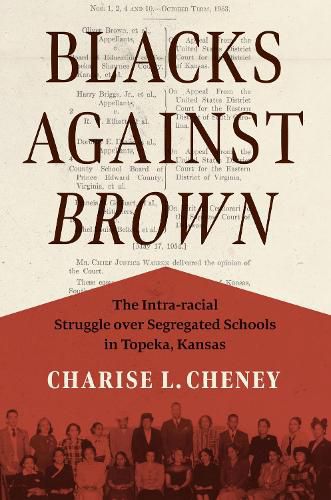Readings Newsletter
Become a Readings Member to make your shopping experience even easier.
Sign in or sign up for free!
You’re not far away from qualifying for FREE standard shipping within Australia
You’ve qualified for FREE standard shipping within Australia
The cart is loading…






Brown v. Board of Education of Topeka, Kansas (1954) is regarded as one of the most significant civil rights moments in American history. Historical observers have widely viewed this landmark Supreme Court decision as a significant sign of racial progress for African Americans. However, there is another historical perspective that tells a much more complex tale of Black resistance to the NAACP's decision to pursue desegregating America's public schools.
This multifaceted history documents the intra-racial conflict among Black Topekans over the city's segregated schools. Black resistance to school integration challenges conventional narratives about Brown by highlighting community concerns about economic and educational opportunities for Black educators and students and Black residents' pride in all-Black schools. This history of the local story behind Brown v. Board contributes to a literature that provides a fuller and more complex perspective on African Americans and their relationship to Black education and segregated schools during the Jim Crow era.
$9.00 standard shipping within Australia
FREE standard shipping within Australia for orders over $100.00
Express & International shipping calculated at checkout
Brown v. Board of Education of Topeka, Kansas (1954) is regarded as one of the most significant civil rights moments in American history. Historical observers have widely viewed this landmark Supreme Court decision as a significant sign of racial progress for African Americans. However, there is another historical perspective that tells a much more complex tale of Black resistance to the NAACP's decision to pursue desegregating America's public schools.
This multifaceted history documents the intra-racial conflict among Black Topekans over the city's segregated schools. Black resistance to school integration challenges conventional narratives about Brown by highlighting community concerns about economic and educational opportunities for Black educators and students and Black residents' pride in all-Black schools. This history of the local story behind Brown v. Board contributes to a literature that provides a fuller and more complex perspective on African Americans and their relationship to Black education and segregated schools during the Jim Crow era.